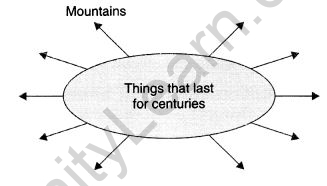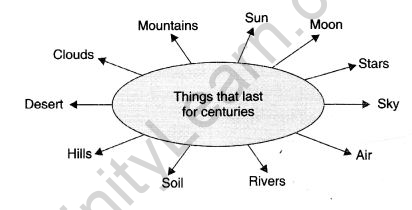Table of Contents
NCERT Solutions for Class 10 English Literature Reader Chapter 9 Not Marble, nor the Gilded Monuments
Welcome to the NCERT Solutions for Class 10 English Literature Reader Chapter 9, “Not Marble, nor the Gilded Monuments.” This chapter was a part of the book “Footprints without Feet,” which follows the CBSE syllabus. Here, we provide detailed answers and explanations to all the questions in the chapter to help you understand the poem better and prepare for your exams.
The poem “Not Marble, nor the Gilded Monuments” by William Shakespeare reflects on the theme of immortality through poetry. It suggests that while physical monuments may fade with time, the written word has the power to preserve memories and achievements forever. In this chapter, you will explore the poet’s ideas and learn how to analyze and interpret poetry effectively.
Our NCERT Solutions are designed to make learning easy and enjoyable. Whether you are looking for answers to specific questions or a comprehensive understanding of the poem, our solutions cover everything. By studying these NCERT solutions, you can gain a deeper insight into the themes, literary devices, and meanings of the poem.
Class 10 English Not Marble Nor the Gilded Monuments Question Answers
Here are all Not Marble Nor the Gilded Monuments question answers included in the NCERT textbook:
Textbook Questions
Question 1.
Look at the following picture carefully.

(a) What has Time been portrayed as? Why?
(b) What are the other symbols associated with Time?
Answer:
(a) Time has been portrayed as a mysterious man wearing a loose cloak with a scythe in one hand and an hour-glass in other. Time is shown to have been fleeting fast. Time is the greatest conqueror.
(b) Tides, bubble of water, wind, sand, money, etc.
Question 2.
(a) What are the things that last for centuries ? List a few things around you that will survive four to five hundred years into the future.

Answer:

(b) Think of things that will perish and/or be forgotten with the passage of time.
Answer:

Question 3.
On the basis of your understanding of Shakespeare’s sonnet, answer the following questions by ticking the correct options.
(a) The rich and powerful got ornate monuments made in order to _____
(i) show off their wealth
(ii) display their power
(iii) show their artistic talent
(iv) be remembered till posterity.
Answer:
(iv) be remembered till posterity.
(b) The poet addresses his sonnet to _____
(i) time
(ii) war
(iii) the person he loves
(iv) powerful rulers.
Answer:
(iii) the person he loves
(c) In the line ‘The living record of your memory’, living record refers to _____
(i) the sonnet the poet has written for his friend
(ii) an existing statue of his friend
(iii) his friend who lives in the poet’s memory
(iv) the autobiography of the poet’s friend.
Answer:
(i) the sonnet the poet has written for his friend
(d) The poet’s tone in the poem is _____
(i) despairing
(ii) optimistic
(iii) loving
(iv) admiring,
Answer:
(iv) admiring,
(e) The poem is set in _____
(i) the place where the poet meets his friend
(ii) a battlefield where Mars is fighting a battle
(iii) a city ravaged by war
(iv) the poet’s study where he is writing.
Answer:
(iv) the poet’s study where he is writing.
Question 4.
Answer the following questions briefly.
(a) Why do you think the rich and powerful people get monuments and statues erected in their memory?
Answer:
Rich and powerful believe that by erecting statues and monuments people will remember them even after their death. They do not realise that people will remember them for their deeds and not for huge structures. It is their pride and ego which makes them do all this.
(b) Describe how the monuments and statues brave the ravages of time.
Answer:
Monuments and statues remade of stone and cement which are strong and structures constructed with these can stay for centuries. They can withstand extreme weather conditions such as rain, storm, severe heat, etc.
(c) Why does the poet refer to Time as being sluttish?
Answer:
Time has been referred to as ‘sluttish’ because time waits for no one. It passes by. We have to learn to value time. Time treats everyone in the same way. It does not treat a rich and poor man differently. “Sluttish” can also mean whorish as time cares for no individual; it is immoral and will finally pass. The grand memorials will become eroded, and the people memorialised will eventually be forgotten.
(d) The poet says that neither forces of nature nor wars can destroy his poetry. In fact, even godly powers of Mars will not have a devastating effect on his rhyme. What quality of the poet is revealed through these lines?
Answer:
The poet is an optimistic individual. He has immense confidence in himself as well as in his ability to write poems which will be remembered till eternity. We also see his confidence in these lines- When marble statues topple and stone buildings and other “works of masonry” are destroyed, the poetry will live on.
Question 5.
Shakespeare’s sonnet has been divided into three quatrains of 4 lines each followed by a rhyming couplet. Each quatrain is a unit of meaning. Read the poem carefully and complete the following table on the structure of the poem.
| Rhyme | scheme | Theme |
| Quatrain 1 | Comparison between poetry and monuments. | |
| Quatrain 2 | Ravages of time on monuments contrasted with | |
| Quatrain 3 | The recorded memorv of posteritv | |
| Couplet | Poetry immortalises friend |
Answer:
| Rhyme Scheme | Theme | |
| Quatrain 1 | a, b, ab | |
| Quatrain 2 | cd cd | the living record of the memory of poet’s friend. |
| Quatrain 3 | ef ef | the poet’s friend will be remembered and praised till posterity |
| Complet | gg | – |
Question 6.
(a) The poet uses alliteration to heighten the musical quality of the sonnet. Working in pairs* underline the examples of alliteration in the poem.
(b) Identify Shakespeare’s use of personification in the poem.
Answer:
(a) Examples of alliteration
- When wasteful war shall statues overturn
- Not marble, nor the glided monuments
- But you shall shine more bright in these contents.
- Even in the eyes of all posterity
- That wear this world out to the ending doom.
(b) Use of personification
- When wasteful war shall statues
- And broils root out the work of masonry.
- Here war and broils are shown to have powerful hands that are capable of causing destruction.
- Your praise shall still find room.
Praise has been shown as a person taking his place somewhere.
We hope the NCERT Solutions for Class 10 English Literature Chapter 9 Not Marble, Nor the Gilded Monuments help you. If you have any query regarding NCERT Solutions for Class 10 English Literature Reader Chapter 9 Not Marble, Nor the Gilded Monuments, drop a comment below and we will get back to you at the earliest.
-
- Class 10 English First Flight Chapter 1 Letter to God Solutions
- Class 10 English First Flight Chapter 2 Nelson Mandela Solutions
- Class 10 English First Flight Chapter 3 Two Stories about Flying Solutions
-
- Class 10 English First Flight Chapter 4 From the Diary of Anne Frank Solutions
- Class 10 English First Flight Chapter 5 Glimpses of India Solutions
- Class 10 English First Flight Chapter 6 Mijbil the Otter Solutions
- Class 10 English First Flight Chapter 7 Madam Rides the Bus Solutions
- Class 10 English First Flight Chapter 8 The Sermon at Benares Solutions
- Class 10 English First Flight Chapter 9 The Proposal Solutions
Class 10 English Not Marble, nor the Gilded Monuments Summary
The poem conveys that the grand monuments and statues built by powerful rulers to immortalize their memory will not outlast the poet’s powerful verses. The poet’s beloved will shine brighter in the poem’s “contents” (verses) than the neglected, time-worn stone monuments.
The poet states that even the destruction caused by “wasteful war” and the ravages of time cannot destroy the memory he has preserved in his poem. The “living record” (the poem) of his beloved will endure and be praised by future generations, outlasting the monuments that have been “overturn[ed]” by war.
The poem’s couplet declares that the poet’s verses will immortalize his beloved, ensuring their memory lives on even after Judgement Day, when they will “wear this world out” (outlive the world).
FAQs on NCERT Solutions Class 10 English Chapter 9 Not Marble, nor the Gilded Monuments
What is the meaning of Not Marble, nor the Gilded Monuments?
The title of the poem Not Marble, nor the Gilded Monuments suggests that the grand, ornate monuments built by powerful rulers are not as lasting or meaningful as the poet's verses. The poem conveys the idea that the poet's words and the memory they preserve will outlive and outshine even the most impressive physical monuments.
What literary devices are used in the poem Not Marble, nor the Gilded Monuments?
The poem uses several literary devices: Metaphor - The marble and gilded monuments are metaphors for the grand, impressive monuments built to immortalize rulers and their legacies. Personification - The poem personifies the monuments, saying they can be overturned by wasteful war and the ravages of time. Hyperbole - The poet claims their verses will outlast even Judgement Day, when this world will wear out - an exaggerated claim to emphasize the enduring power of the poem.
What is more powerful than marble and gilded monuments?
According to the poem, the poet's verses are more powerful and enduring than the grand, physical monuments built by the powerful. The poem declares that the poet's living record (the poem itself) will preserve the memory of their beloved long after the monuments have crumbled.
What is the irony of the poem Not Marble, nor the Gilded Monuments?
The irony of the poem is that the poet is using an elaborate, poetic form (a sonnet) to criticize the grandiose monuments built by rulers. The poet is employing the very type of artistic expression they claim is more powerful and lasting than physical monuments.
What message does the poem Not Marble convey?
The main message of the poem is that the power of poetry and the written word is greater and more enduring than the physical monuments built by the powerful. The poet's verses will preserve the memory of their beloved long after the gilded monuments have been destroyed by time and war.
Is Sonnet 55 a love poem?
Yes, Sonnet 55 is considered a love poem. While it does not explicitly mention the poet's beloved, the poem is addressing and praising the enduring power of the poet's verses to immortalize their love and memory of their beloved. The poem's central theme is the ability of poetry to outlast physical monuments and preserve the memory of the poet's love.
Beta feature






